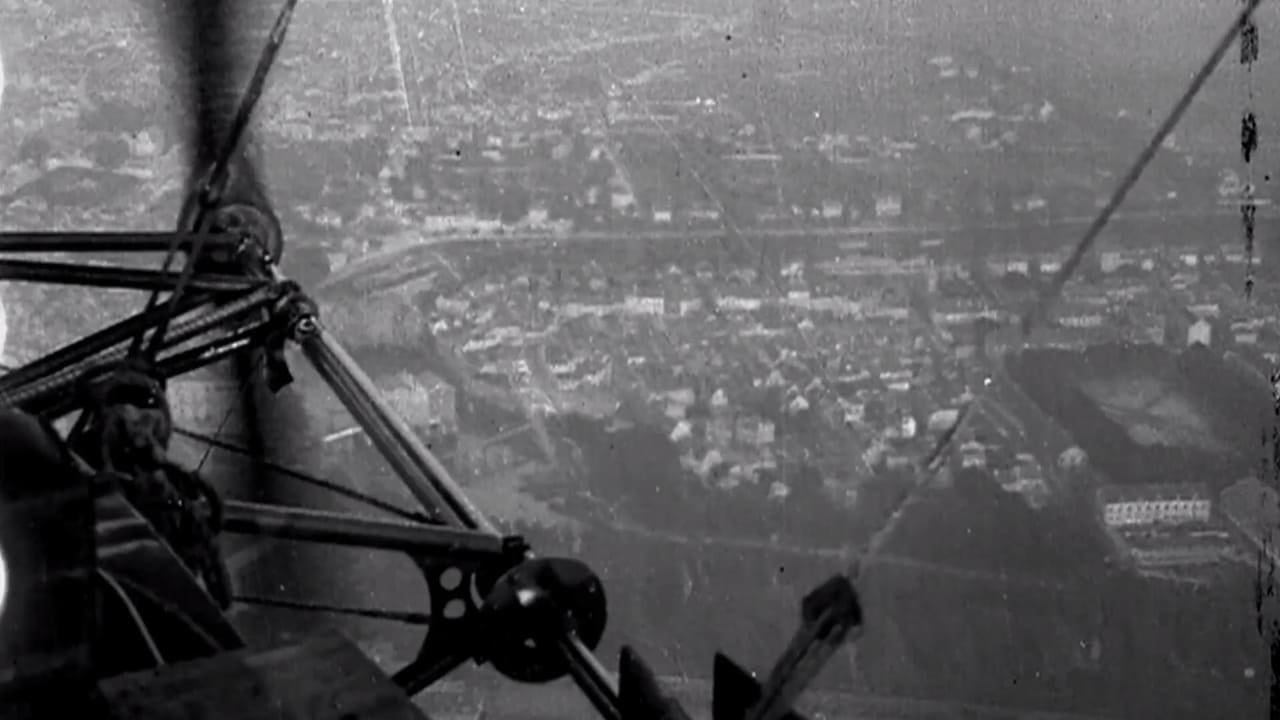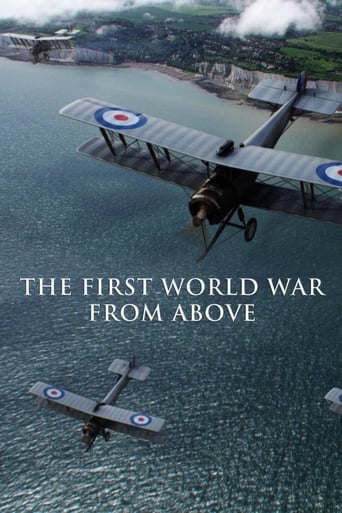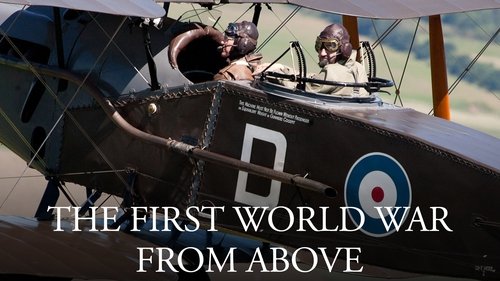


Overrated and overhyped
... View MoreAn Exercise In Nonsense
... View MoreA Major Disappointment
... View MoreWhile it is a pity that the story wasn't told with more visual finesse, this is trivial compared to our real-world problems. It takes a good movie to put that into perspective.
... View MoreI have to admit that when I first watched this documentary – I enjoyed it. However, after reading the criticisms it received on "The Great War Forum", I re-watched "The First World War From Above" and realised that it's a deeply flawed documentary.It begins with a introduction that relays all the information the viewer needs to know within one minute, but then spends another two minutes summarising what we're going to see over the next hour – which feels redundant and waste of running time. When the programme properly begins, we're told that a unique 78 minute film has been unearthed in the French archives, and has been hidden from view for nearly a century. However, the film in question: "En Dirigeable Sur Les Champs de Bataille," was used in the 2008 documentary "14-18: The Noise and the Fury" and some it was apparently employed in a 1984 programme. This 78 minute film was recorded by Lucien Le Saint in 1919, aboard a French airship that flew along the Western Front, piloted by Jacques Trolley de Prévaux. The presenter tells us that he'll be using a modern airship to fly over the same landscape that was filmed in 1919, to see what remains of the Western Front. The 1919 footage is amazing, but unfortunately only about four minutes of it is used in the whole programme. The biggest problem with this documentary is its bizarre structure. Despite what we're told at the start, the presenter isn't shown retracing the journey of the 1919 airship until more than halfway through the film (and even then, not for very long). In the meantime, we do get a couple of interesting scenes covering aerial photography, but 20 minutes in, the focus shifts to the infamous Somme battlefield, even though this location was never filmed by Le Saint. Furthermore, very little of the Somme segment pertains to aerial observation, and focuses instead on tunnelling operations and the losses suffered on 1st July 1916. Next, they move onto the mining success at the Battle of Messines, with the modern airship flying over the mine craters, yet although we're told that Le Saint filmed part of this battlefield we're only actually shown about 10 seconds of his material. It seems odd to retrace the French airship's journey, but show the audience so few examples of how various locations look today, in comparison to 1919. The rest of the documentary features very little on aerial observation and instead features stories that are interesting, but feel out of place, such as a French woman recalling when she fell into a WW1 tunnel network beneath her farm.Another major problem is the presenter and one of the contributing archaeologists saying things that are either incorrect or don't make sense. For example, when the former is flying in a WW1-era aeroplane, he remarks, "The most dangerous part of all was take-off. If the engine cut before you got airborne, the plane simply drove itself and the pilot into the ground." But this could happen to any aeroplane, so why even bring this up? Later, when the modern airship flies over the Palingbeek golf course, the archaeologist aboard says that the course's lakes are almost certainly mine craters that have filled with water since the war. However, these are actually ornamental lakes that were created in the 1890s – long before the First World War. Near the end, Paris is described as "untouched by war" – even though Germany used enormous siege guns to shell the city in 1918. I would be willing to overlook such comments, if they had been few and far between, but unfortunately they occur frequently here.Near the end, the presenter meets Aude Trolley de Prévaux, the daughter of the airship pilot, who tells us about how her father and mother helped the French Resistance in WW2, but were eventually betrayed, tortured and executed. She's then informed about Le Saint's film, and is delighted to view footage of her father (she was only a baby when he was killed). Whilst I was interested to see her reaction, my issue with this scene is that the presenter was questioning her whilst she was watching it, when in my opinion he should have remained quiet and let her have her happy/painful moment.Overall, if you have a basic knowledge of the First World War, then you might enjoy this documentary. However, if your WW1 knowledge is quite extensive, I would not recommend watching it, because the factual errors, the confusing structure and the general failure to follow the original premise, will probably be quite annoying.
... View MoreAerial observation had been possible since the invention of hot air balloons, but with the advent of World War I it was possible to combine improved aircraft with cameras light enough to take aboard and aim at enemy territory. Both sides came to recognize the importance of this new technological synergy and the interpretation of the resulting bird's-eye views of enemy installations and troop movements. Now, planes could be sent to bomb enemy targets that had been specifically identified. The drawback for reconnaissance pilots was that the enemy knew what they were doing and began to shoot aerial photographers out of the sky.The human interest story comes as a surprise. The filmmakers discovered a reel in a French government archive that showed aerial footage of the Western Front taken within months after the end of the war. From above, you can see that hostilities have ceased, and now people are clearing away some of the wreckage and even trying to rebuild. And while the cameraman is never seen, the pilot he sits behind frequently turns around and smiles at the camera. Who was he? the filmmakers wondered. They not only learned who he was but that he had a sad fate. Twenty years later, he and his wife were founding members of the French Resistance who fought the Nazis who conquered France in 1940. The couple were captured by the Gestapo, tortured, and executed. What is more, they left behind a toddler, a girl who grew up never having known her parents."What would you say if I told you that we found film of your father?" one of the filmmakers asks the now elderly daughter of the pilot in the movie. She expresses incredulity until they open a laptop and show her the image of the pilot turning around and smiling at the camera."In the only picture I have had of my father," she says through tears, "he is older and seems so serious. I never expected to see him moving or looking so young and smiling. It's as if you have given my father back to me."
... View More